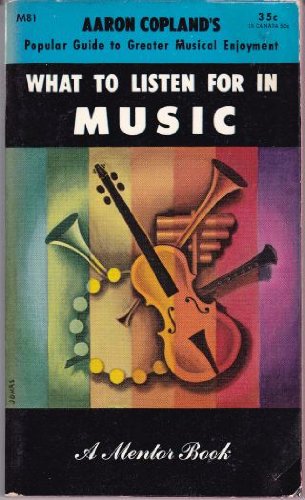What do you think?
Rate this book


192 pages, Mass Market Paperback
First published January 1, 1939


Bach wrote a good many preludes (very often followed by a balancing fugue) many of which are in "free" form. It was these that Busoni pointed to as an example of the path that he thought music should take. Bach achieved a unity of design in these "free" preludes either by adopting a pattern of well-defined character or by a clear progression of chordal harmonies which lead one from the beginning of a piece to the end without utilizing any repetition of thematic materials. Often, both methods are combined. By these means Bach engenders a feeling of free fantasy and a bold freedom of design that would be impossible to achieve within a strict form. When one hears them, the conviction grows that Busoni was quite right in saying that the future problems of handling form in music are bound up with this Bach-like freedom in form.
It is difficult adequately to explain the meaning of that phrase to the layman. To be properly understood in relation to a piece of music, it must be felt. In mere words, it simply means that every good piece of music must give us a sense of flow--a sense of continuity from first note to last. Every elementary music student knows the principle, but to put it into practice has challenged the greatest minds in music! A great symphony is a man-made Mississippi down which we irresistibly flow from the instant of our leave-taking to a long foreseen destination. Music must always flow, for that is part of its very essence, but the creation of that continuity and flow--that long line--constitutes the be-all and end-all of every composer's existence.
In a sense, the ideal listener is both inside and outside the music at the same moment, judging it and enjoying it, wishing it would go one way and watching it go another—almost like the composer at the moment he composes it; because in order to write his music, the composer must also be inside and outside his music, carried away by it and yet coldly critical of it. A subjective and objective attitude is implied in both creating and listening to music.